A series of natural textile and dye experiments.
EXPERIMENT 01
An experiment with Scoby to create biodegradable rope.
Our Scoby, also known as symbiotic culture of bacteria and yeast, was grown in both circular and rectangular tubs due to limited space. This experiment was a continuation of my previous project Scoby Tea Bags - the recipe can be found here ↗.
(Total amount of Scoby harvested)
Following the harvest, we cut the Scoby into long strips, tying them together to create one long strand. When spinning this piece, we found that it would not cling onto itself to form a rope, so we combined it with twine.
(Trimmed strips of Scoby)

(Final rope)
In this project, I grew and experimented with Scoby (symbiotic culture of bacteria and yeast). As a continuation of growth from my previous experiments (see Scoby: Experiments & Tea Bags), we experimented potential applications of bacterial cellulose. In traditional rope making methods, fiborous materials are trimmed into strips, which are then spun for the fibers to cling onto eachother. We utilized this method to combine twine and Scoby to create a semi-living rope.
→ Spring 2022 (2 Weeks)
→ Collaborator: Kate Lawrence
EXPERIMENT 02
An experiment on symbiosis algae growth to create sustianable alternatives to chemical-based inks.
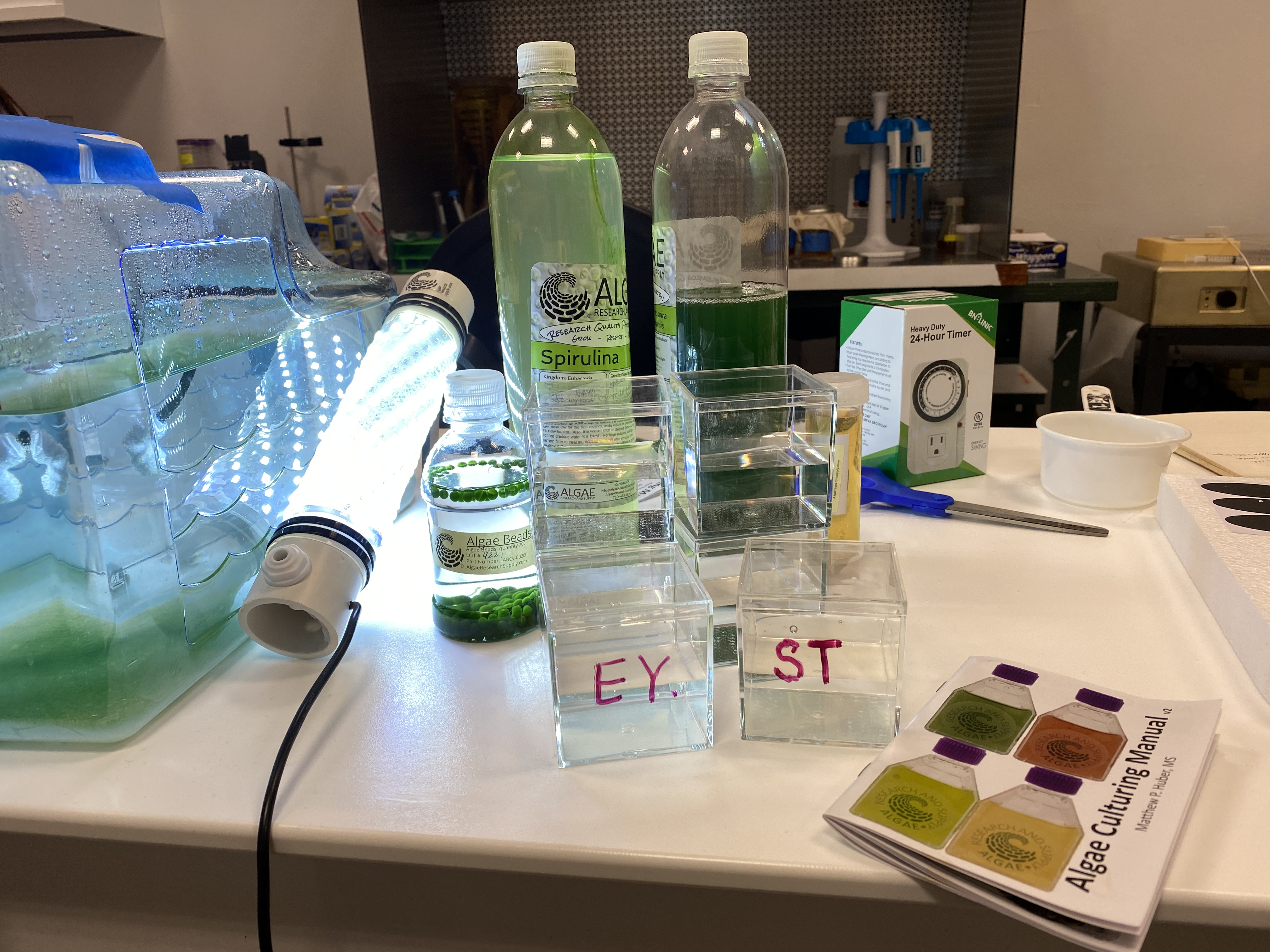
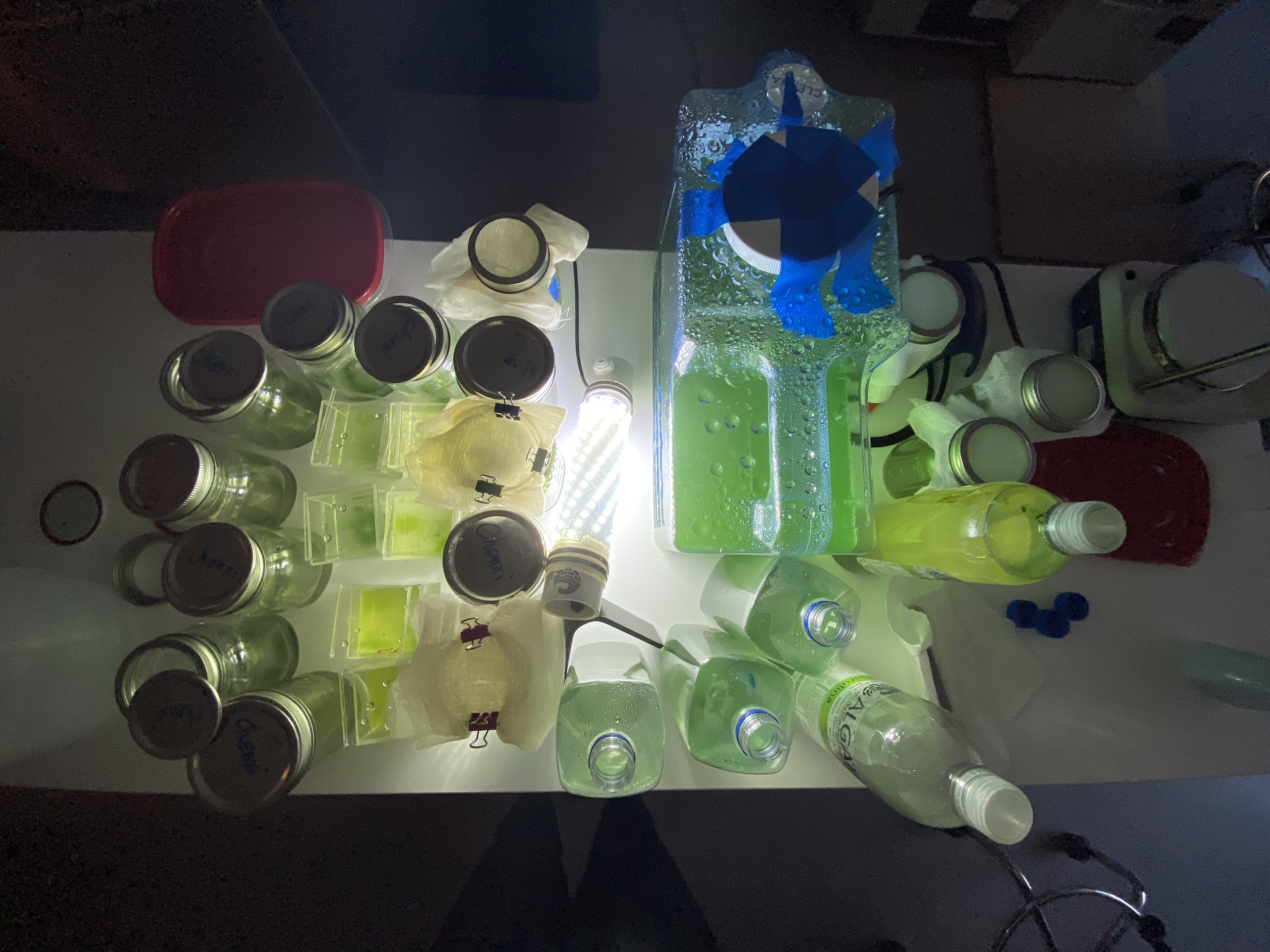
(Materials & Setup)
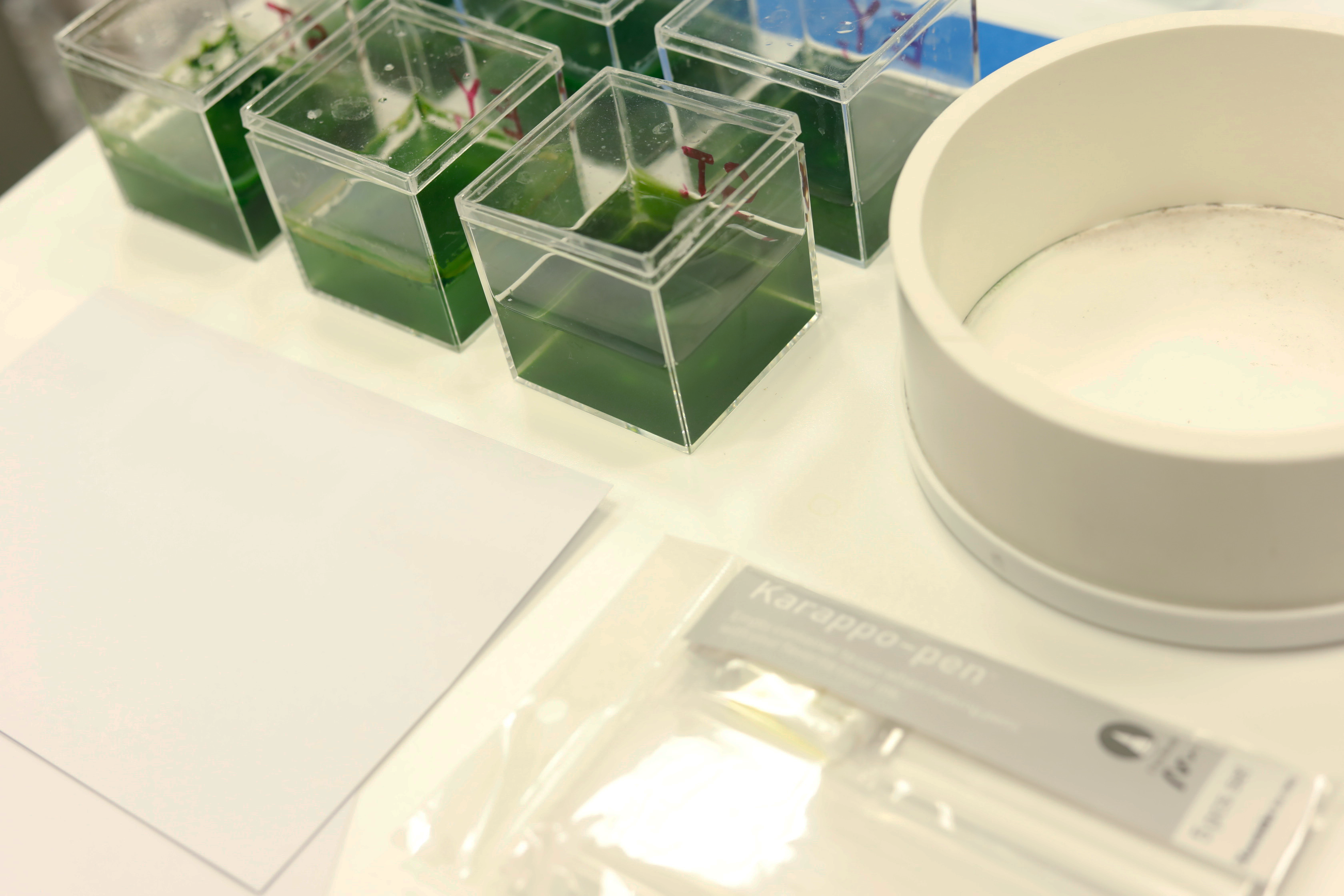
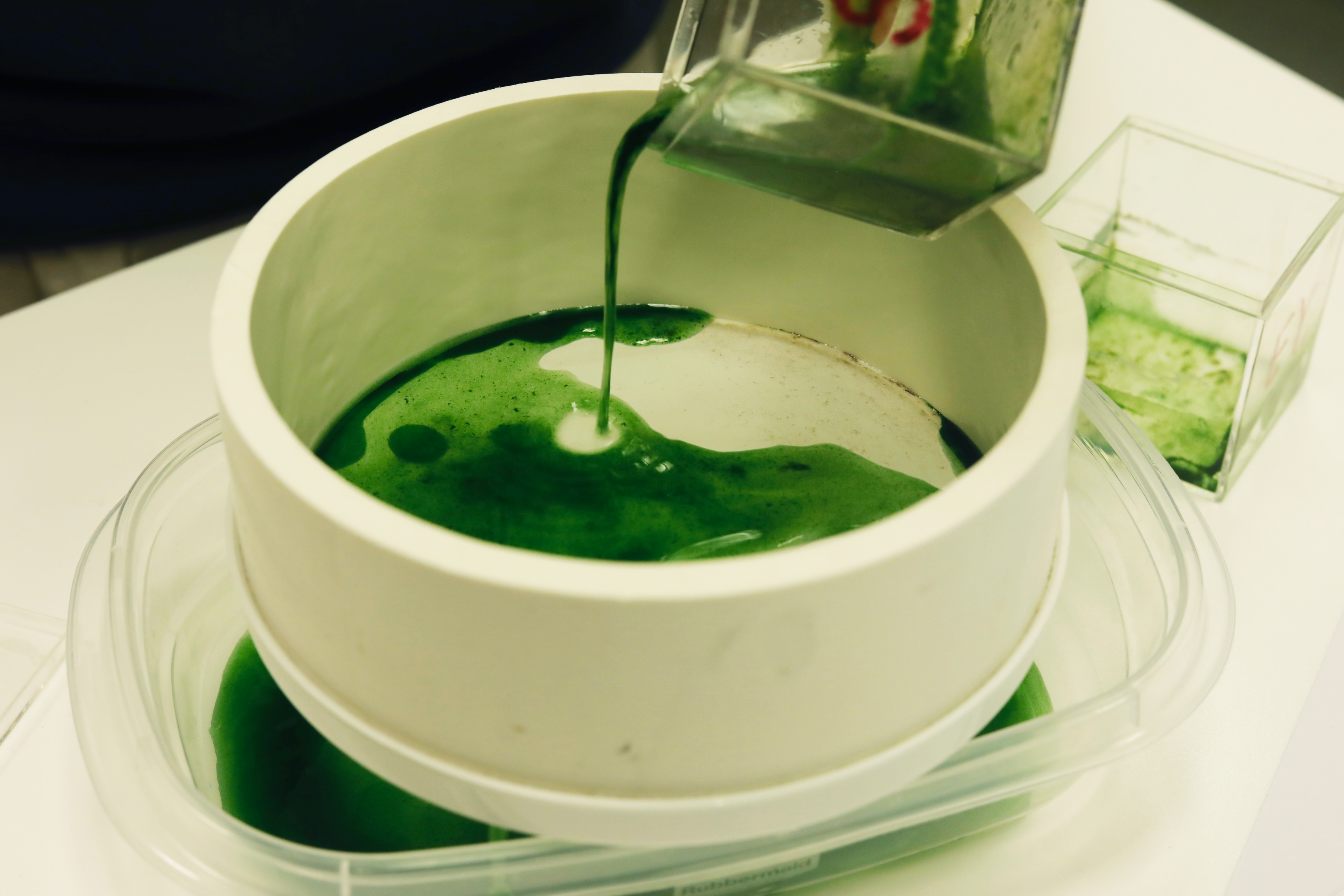
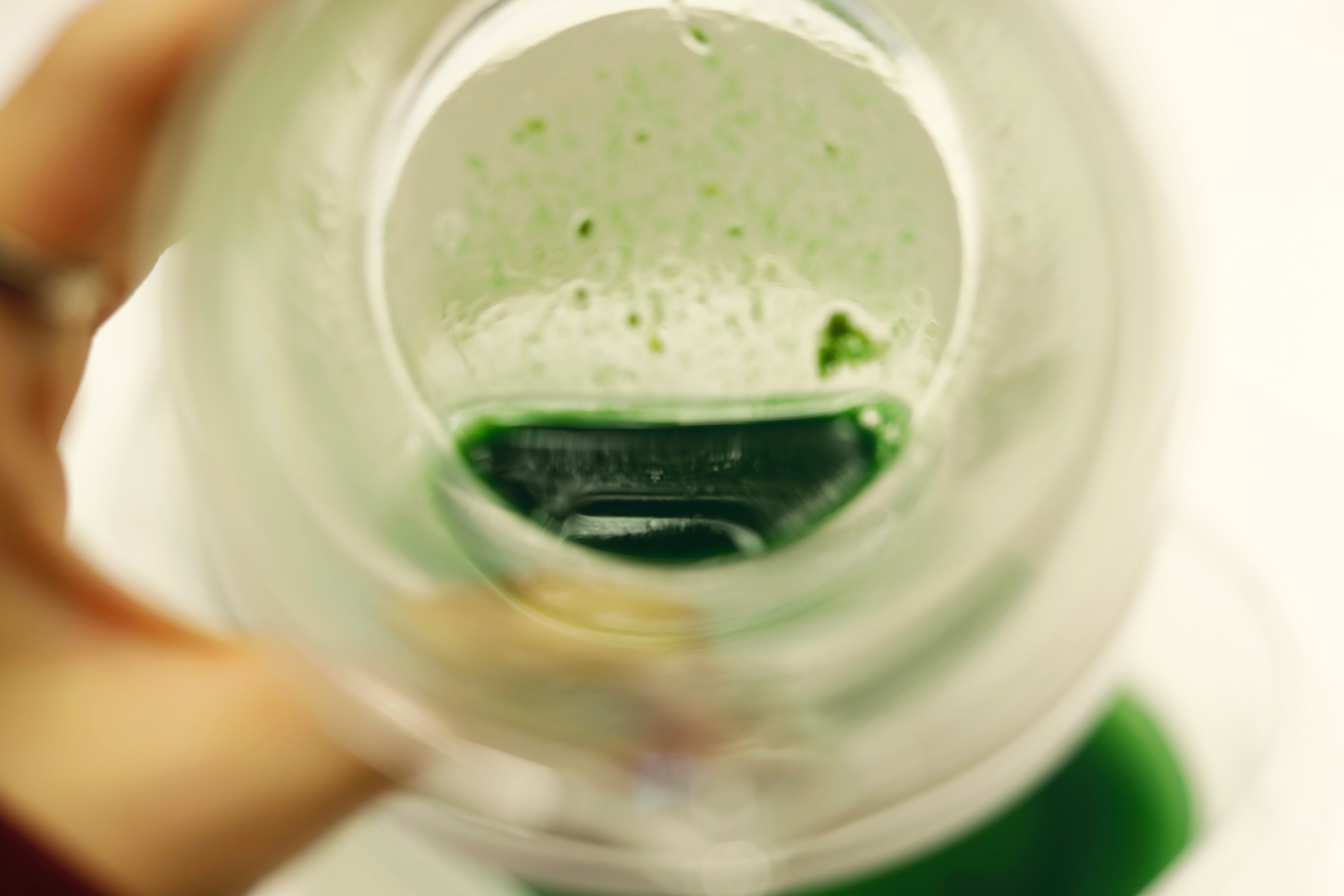
(Total Harvested Algae)
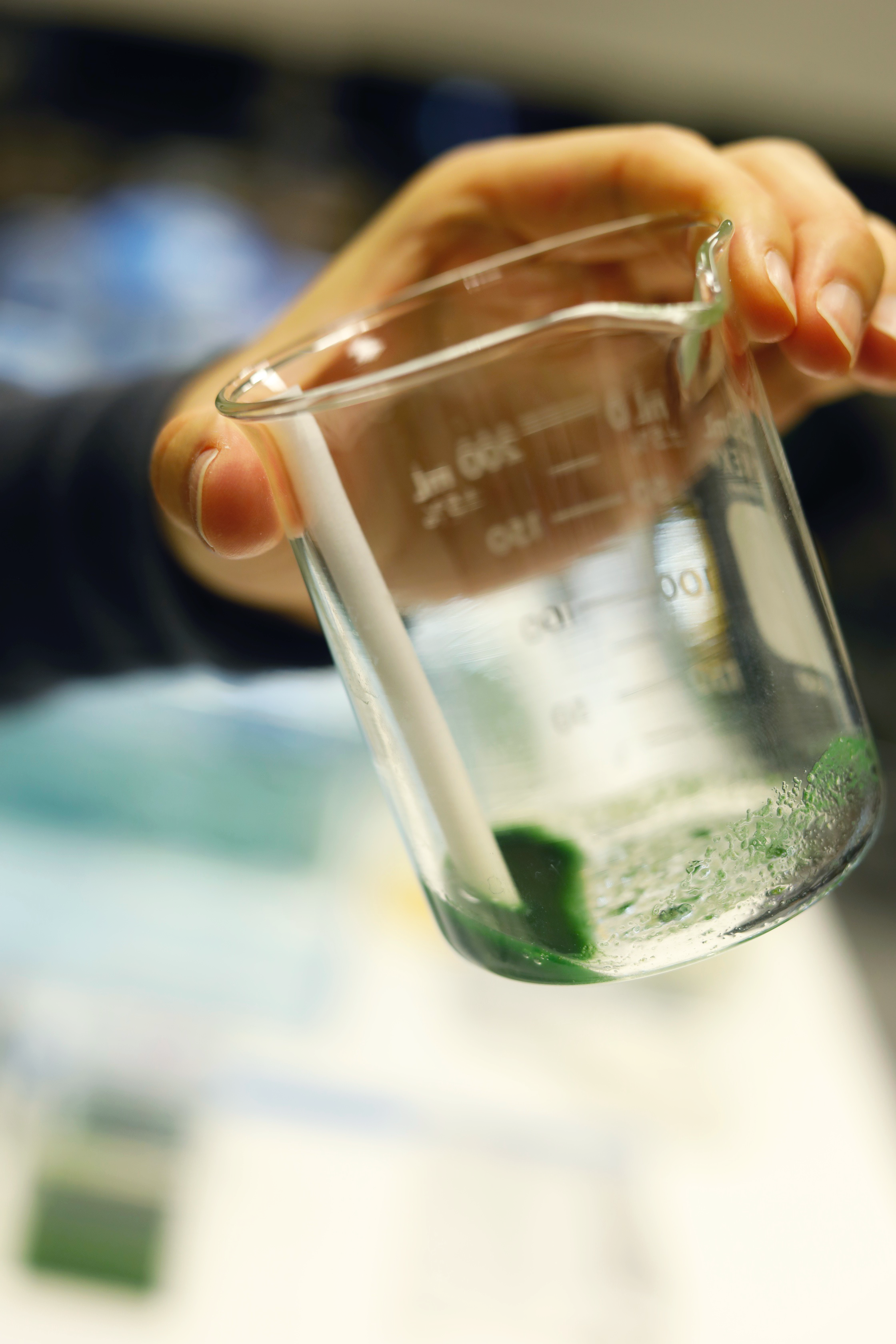
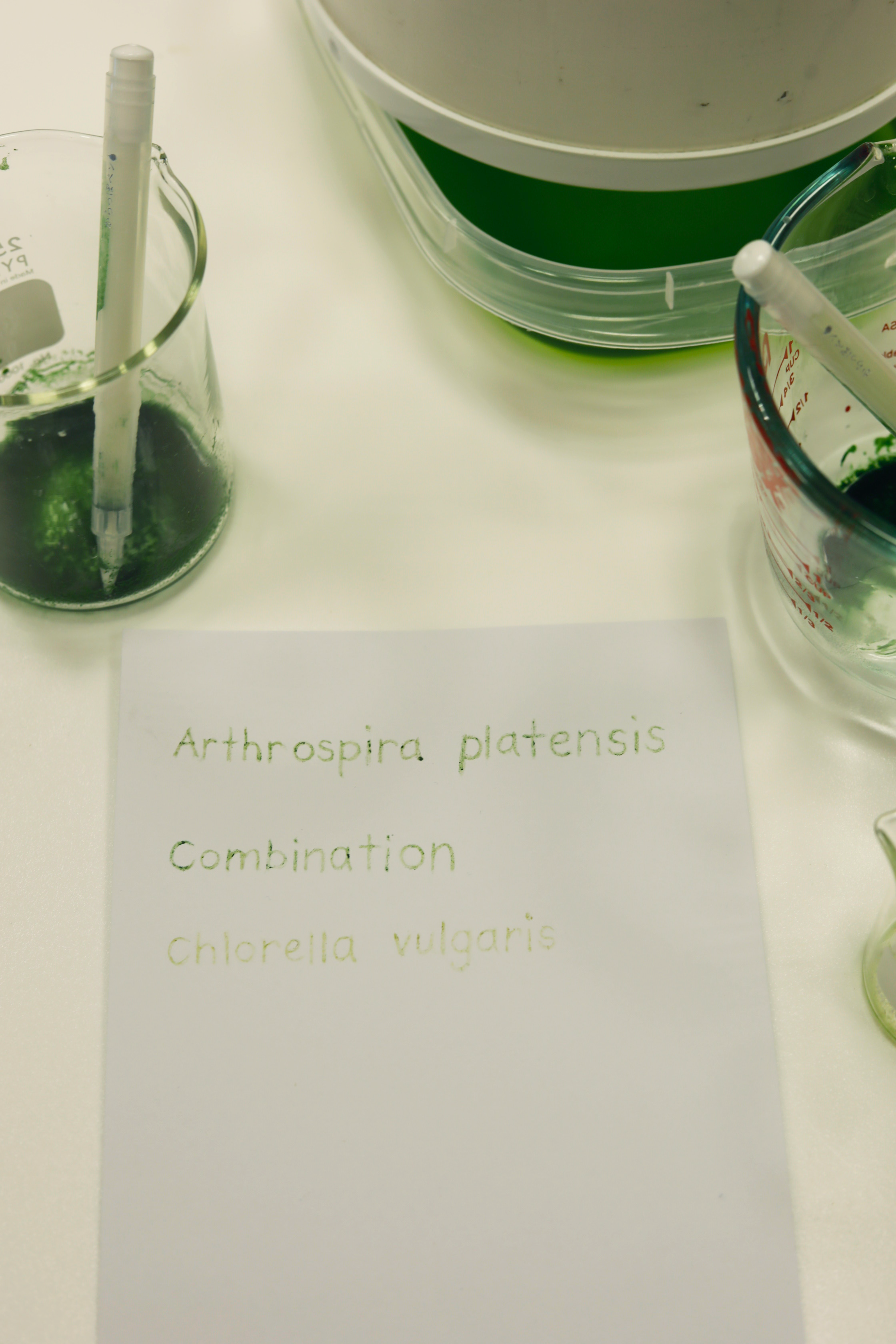
In this project, we wanted to test if different algae species, specifically Arthrospira platensis and Chlorella vulgaris, had a mutualistic relationship. We specifically examined the density of the algae in each jar, which thus affected the saturation of the resulting ink. We noticed different growth movement due to light exposure, and ultimately used our algae to create 3 different fountain pen inks.
→ Fall 2021 (8 Weeks)
→ Collaborator: Shu Yu
EXPERIMENT 03
An experiment on mycelium coloring properties.
Our experiment started off with natural dyes creating from agricultural waste - blueberry dyes. We were curious to see if the time at which we added the dyes affected the mycelium's ability mold to the alphabet letters so we tested 3 different times: 1) On day 1 of being added into the mold, 2) After 1 week of being added into the alphabet mold, 3) After 2 weeks of being added into the alphabet mold. Our first batch of mycelium grew mold, to which we hypothesized was due to additional sugars. We ultimately decided to use food dye.
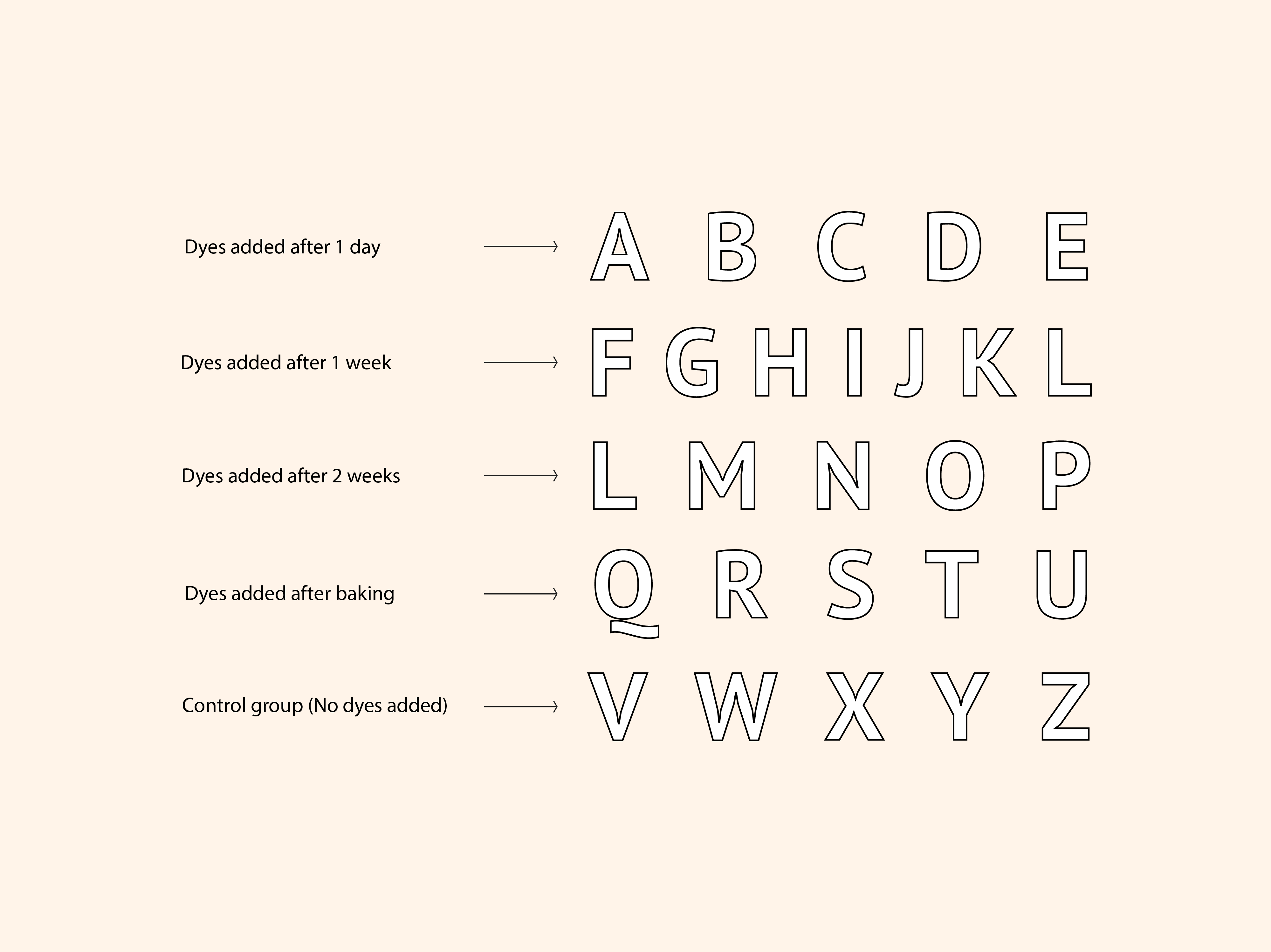
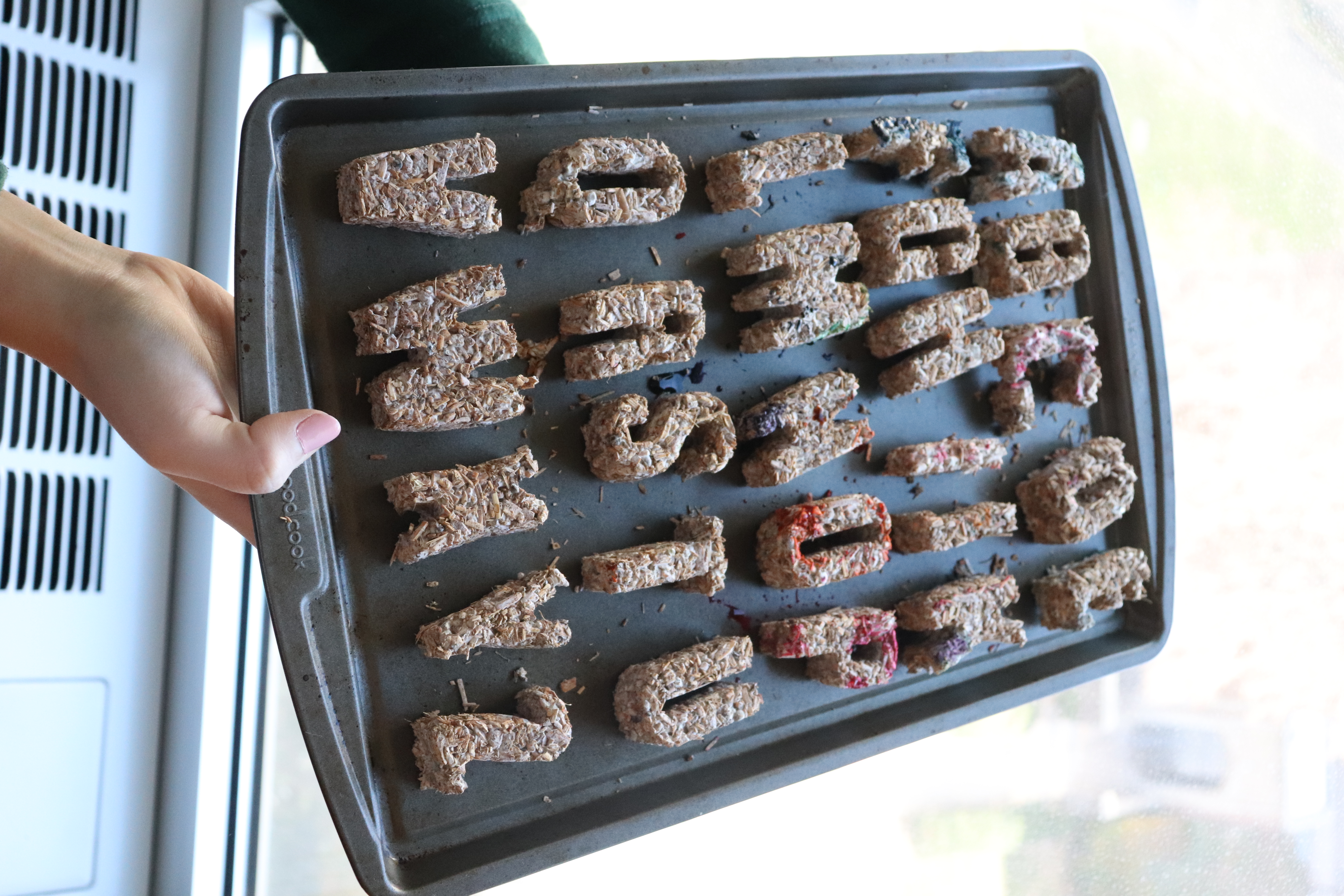
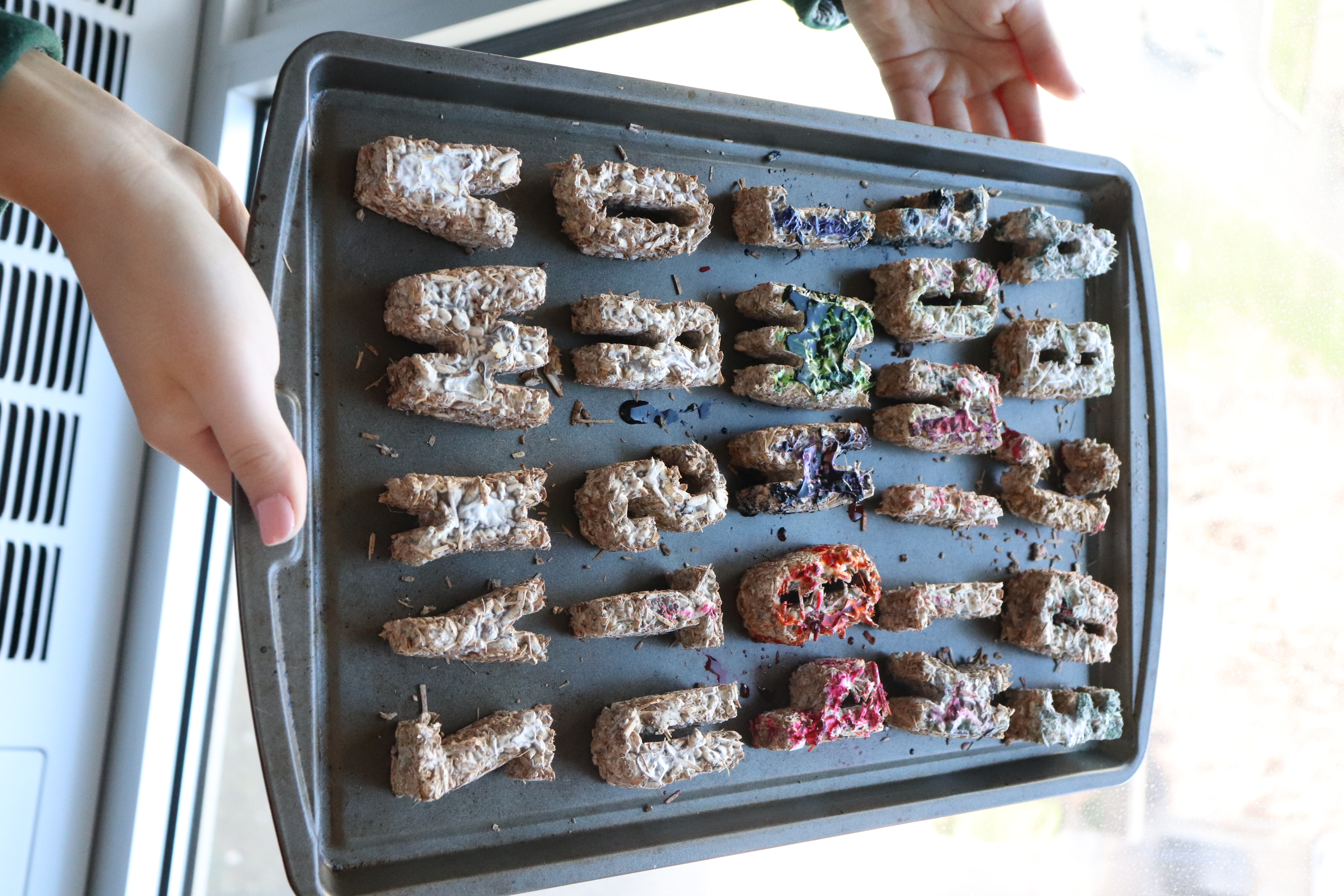
(Before baking)

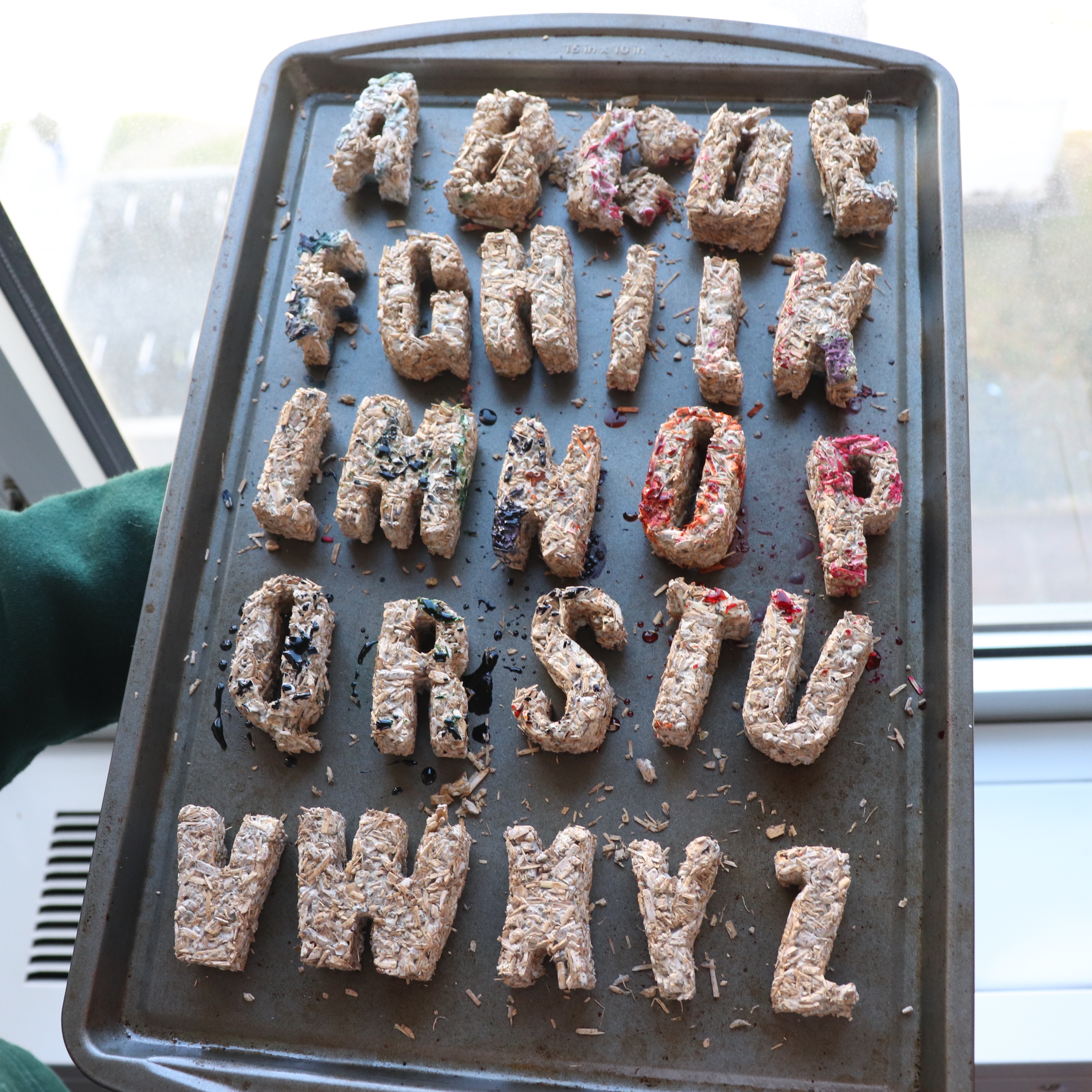
(After baking)
In this project, we researched mycelium color properties with liquid dyes. With a natural white color, we tested different times at which the dye was introduced to the mycelium culture. Our mycelium were ultimately made into alphabet blocks.
→ Fall 2021 (8 Weeks)
→ Collaborator: Brynn Lilley